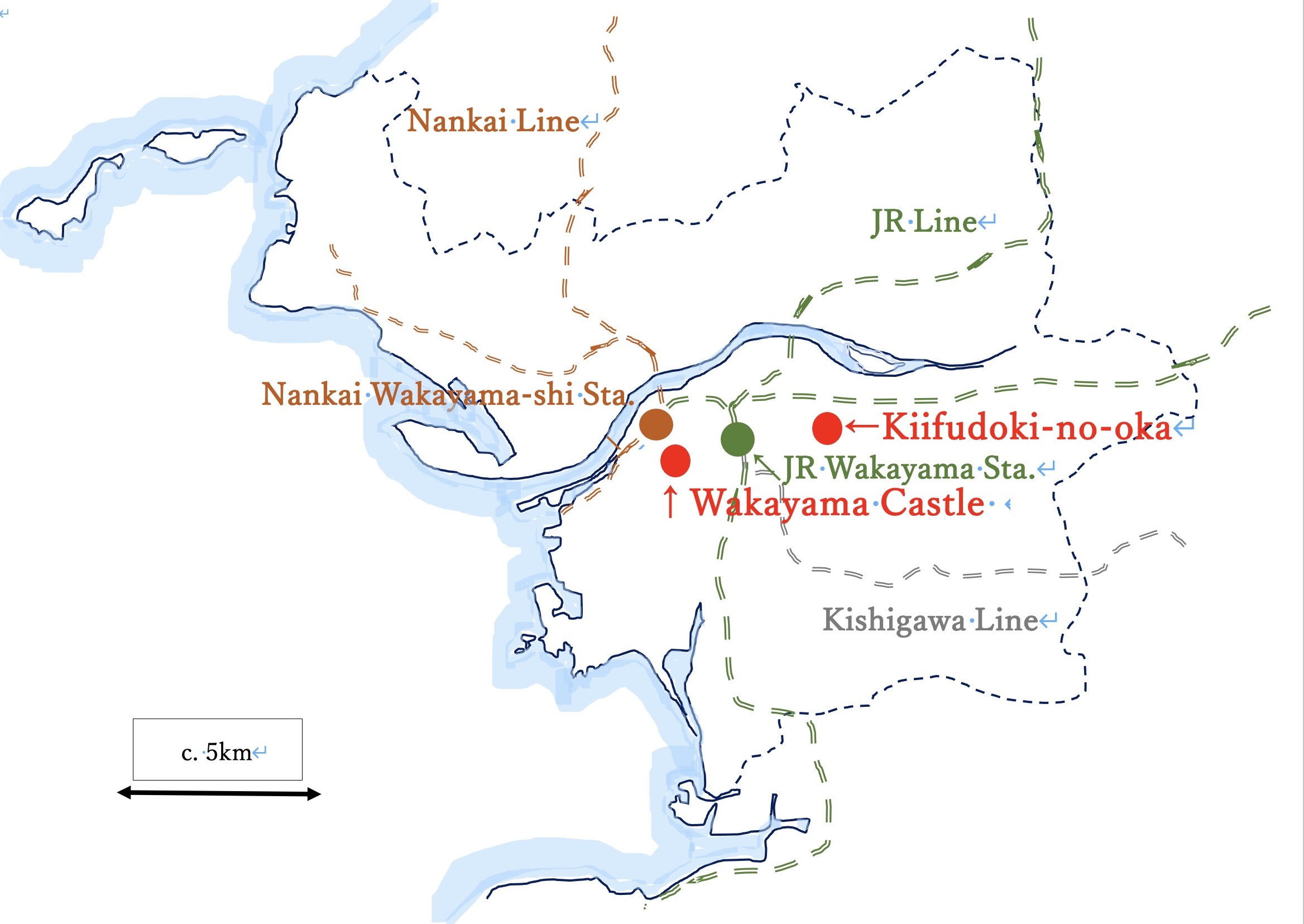Iwase-senzuka
The latest article is about the Kaya Countries in the page of My Views (April 18, 2024).
Introduction
I truly appreciate your visit to this website
I am one of voluntary guides of Kii-fudoki-no-oka, a prefectural museum of history adjoining Iwase-senzuka Kofun Cluster.
This site aims to provide people both home and abroad with helpful information on the historical park in order that more tourists will become interested in the destination and decide to visit there.
See My Approach to This Site for more details on my reasons to run this website.
Please note that descriptions in this website, which are based on my limited understanding, may contain inaccuracies.
Basic Information
Two Technical Terms
- "Kofun" denotes "old barrows" in Japanese. The term applies to "barrows built in the Kofun Period" as a technical term. See Kofun for more details.
- "Haniwa" is an unglazed earthen object arranged on the mound of kofun. See Haniwa for more details.
Iwase-senzuka Kofun Cluster
- As "Iwase-senzuka," means "a thousand barrows at Iwase" in Japanese, the first part of the full name is applied to "Iwase-senzuka Kofun Cluster (岩橋千塚古墳群)" in this website.
- Iwase-senzuka is renowned for its distinctive burial stone chambers and unique haniwa.
- The number of clustered kofun at Iwase-senzuka in the whole area is 900. It is one of the largest among kofun clusters in Japan.
- Kofun in Iwase-senzuka were built from the end of the 4th century through the 7th century.
- It is classified as National Special Historic Site of Japan. The designated area contains 500 kofun.
- Characteristic Iwase-senzuka horizontal burial stone chambers are categorized as "Iwase-type."
See Iwase-senzuka Kofun Cluster for more details.
Kii-fudoki-no-oka
- The nameplate of the building says, "Wakayama Prefectural Kii-fudoki-no-oka Museum of Archaeology and Folklore."
- The premises adjoin Iwase-senzuka.
-
The facilities consist of the following sections:
- an exhibition room for excavated artifacts and folk materials
- a workshop space
- four relocated folk houses
- a newly-built pit dwelling
- a botanical garden
- paths through Iwase-senzuka park area
- The exhibits include unique haniwa which are National Important Cultural Assets of Japan.
See Kii-fuodki-no-oka Museum for more details.
Also, see the official website of Wakayama Prefectural Kii-fudoki-no-oka Museum for details including the opening hours.
My Reasons to Recommend Iwase-senzuka
Key attributes Iwase-senzuka and Kii-fuodki-no-oka possess are as follows:
- A highly characteristic method to construct burial stone chambers. The style, which is dissimilar to those in Osaka and Nara, developed exclusively in the northern part of Wakayama Prefecture.
- Furthermore, visitors are permitted to enter some of the burial facilities. It is a marvelous opportunity to observe the stone rooms which have retained their original shapes for almost 1,500 years.
- Unique pieces of haniwa. Numerous fragments of those earthen relics were excavated Dainichi-yama No.35 Kofun from 2003 to 2005. Specialists have concluded that they were produced in the early 6th century.
- Explanation from voluntary guides. The stories deepen visitors understanding of the ancient history of Wakayama. An English-speaking guide (me) is also available. (You usually need to arrange an appointment with a person in charge by phone or personally at the office. The guide is free of charge.)
Access
Map of Wakayama Prefecture

Wakayama City and Wakayama Prefecture
Wakayama City is located in the most north-western part in Wakayama Prefecture. The population of the prefecture is 940,000. Wakayama City, the prefectural capital, has a population of 360,000.
JR Hanwa Line and Nankai Line
Two railroads run between Osaka City and Wakayama City. They are JR Hanwa Line from JR Osaka Station via JR Tennoji Station, and Nankai Line from Nankai Namba Station. The terminal of Nankai Line is Nankai Wakayama-shi Station and that of JR Hanwa Line is JR Wakayama Station.
Map of Wakayama City, Including Kii-fudoki-no-oka (Iwase-senzuka)

Railroad Stations
J JR Wakayama Station (c. 4.2km) is nearer to Kii-fudoki-no-oka (Iwase-senzuka) than Nankai Wakayama-shi Station. The closest JR station to Kii-fudoki-no-oka is JR Tai-no-se Station (c. 2km, 30-minute walk).
Buses and Taxis
Wakayamabus Co., Ltd. operates its bus service from JR Wakayama Station (the east exit) to the museum. Please see the website of Wakayamabus for details.
Taxicabs from JR Wakayama Station is also available. The east exit taxi stand is nearer to the museum.
Cars
Kii-fuodki-no-oka Museum is possession of a free parking lot accommodating 87 cars (8:00 a.m. to 6:00 p.m.).